There has been considerable commentary on the Justice Department’s filing of an amicus brief saying that Title VII of the Civil Rights Act of 1964 does not cover employment “discrimination based on sexual orientation.” The DOJ filed the brief in the case of Donald Zarda, who filed suit against his former employer Altitude Express in a case that questions whether sexual orientation is included in Title VII’s protections. Title VII prohibits employment discrimination based on race, color, religion, sex and national origin. Zarda was a skydiving instructor who said he was fired after disclosing his sexual orientation to a customer. He died in a skydiving accident before the case went to trial, and executors of his estate have continued the lawsuit on his behalf. The DOJ’s brief states “the sole question here is whether, as a matter of law, Title VII reaches sexual orientation discrimination. It does not, as has been settled for decades. Any efforts to amend Title VII’s scope should be directed to Congress rather than the courts”. It concludes “Title VII does not prohibit discrimination because of sexual orientation.”
The question is, of course, not that simple and has been the subject of commentary for some time. See, for example, Sex and Sexual Orientation: Title VII after Macy v. Holder by Cody Perkins, 65 Administrative Law Review 427 (Spring 2013). This article examines the EEOC’s treatment of sexual orientation as somewhat convoluted. While there is binding precedent from the Commission that “Title VII’s prohibition of discrimination based on sex does not include sexual preference or sexual orientation”, it cites two decisions issued through the Office of Federal Operations indicating that discrimination based on sexual orientation is discrimination based on sex for Title VII purposes under a Hopkins sex stereotyping theory. See Veretto v. Donahoe, where the Office of Federal Operations found that discrimination against a man for marrying another man was a valid sex stereotyping claim, because it was discrimination based on the stereotype that “marrying a woman is an essential part of being a man,” and Castello v. Donahoe, where the Office of Federal Operations found that discrimination against a woman for being attracted to other women was a valid sex stereotyping claim under Title VII, because it was discrimination based on the stereotype that women should only be attracted to and have relationships with men. These decisions, while not binding on federal agencies, indicate that the EEOC intends to allow claims based on sexual orientation under a sex stereotyping theory under Title VII. While there may be no binding precedent from the EEOC stating that sexual orientation is covered under Tide VII, there is binding precedent regarding transgender people. In Macy v. Holder, the plaintiff, a police detective from Phoenix who was still presenting as a man had applied for and been given assurances that she would be hired for a position with the Bureau of Alcohol, Tobacco, Firearms and Explosives (ATF). After going through steps in the hiring process and being told repeatedly that she would be hired, Ms. Macy disclosed to ATF that she was in the process of transitioning from male to female and was informed that the position she had applied for was no longer available due to budget constraints. Upon further investigation, Ms. Macy learned that the position had in fact been offered to someone else and filed a formal Equal Employment Opportunity complaint with ATF, alleging discrimination in hiring based on sex. When the agency failed to identify her claim as sex discrimination, instead creating a separate claim of “discrimination based on gender identity,” Ms. Macy appealed her case to the EEOC. In a reversal of its previous position, the full Commission held that “discrimination based on gender identity, change of sex, and/or transgender status” is discrimination “because of sex” under Title VII. In making this determination, the EEOC utilized two important theories: a traditional “sex stereotyping” theory and a new “per se because of sex” theory, both based on the Supreme Court’s decision in Hopkins.
 More recently, In April 2017, the en banc Seventh Circuit Court of Appeals overruled its own precedent and became the first Circuit to hold that discrimination on the basis of sexual orientation can constitute unlawful sex discrimination under Title VII. See Hively v. Ivy Tech. Cmty. College of Indiana, II, 853 F.3d 339, 351 (7th Cir. 2017) (overruling Hively v. Ivy Tech. Cmty. College of Indiana, I 830 F.3d 698, 709 (7th Cir. July 28, 2016).). All other Circuits that have addressed the issue have held sexual orientation is not protected under Title VII. The EEOC previously adopted the
More recently, In April 2017, the en banc Seventh Circuit Court of Appeals overruled its own precedent and became the first Circuit to hold that discrimination on the basis of sexual orientation can constitute unlawful sex discrimination under Title VII. See Hively v. Ivy Tech. Cmty. College of Indiana, II, 853 F.3d 339, 351 (7th Cir. 2017) (overruling Hively v. Ivy Tech. Cmty. College of Indiana, I 830 F.3d 698, 709 (7th Cir. July 28, 2016).). All other Circuits that have addressed the issue have held sexual orientation is not protected under Title VII. The EEOC previously adopted the  position in 2015 now taken by the Seventh Circuit. The Supreme Court and the Circuit Courts have held that Title VII protects employees who are discriminated against because they do not conform to the stereotype for their gender and this often may overlap with sexual orientation. For more on the subject, see Brooklyn Law School Library’s copy of Controversies in Equal Protection Cases in America: Race, Gender and Sexual Orientation (Controversies in American Constitutional Law) by Anne Richardson Oakes (Call No. KF4755 .C664 2015).
position in 2015 now taken by the Seventh Circuit. The Supreme Court and the Circuit Courts have held that Title VII protects employees who are discriminated against because they do not conform to the stereotype for their gender and this often may overlap with sexual orientation. For more on the subject, see Brooklyn Law School Library’s copy of Controversies in Equal Protection Cases in America: Race, Gender and Sexual Orientation (Controversies in American Constitutional Law) by Anne Richardson Oakes (Call No. KF4755 .C664 2015).

 By now, students taking bar exams have done the hard work studying. Now it is time to perform. At this point, it is going to be difficult to memorize much more, so now is the time to focus on practice tests and the art of taking the test, the actual process, and your pace. Spend your time wisely – not cramming in more random facts you probably won’t recall anyway. Don’t forget to breathe! Take the time to meditate, so you can clear your head which will allow your thoughts to become better organized. This will serve you well in the week leading up to the bar exam. Start each morning meditating, allowing your brain to be calmed and soothed. Not only will this help in the week before the bar, studies show that people who meditate make better complex decisions. Just what you need to answer the complex bar exam questions! So, when you take the exam, and you read that question that seems to be a trusts and estates question, or wait, is it a dissolution question? Stop, breathe, and think! Allow yourself just a minute to breathe in deep, clear your mind, and breathe out. Re-read the question, and do what you are well trained to do at this point – apply the law! Do this anytime you hit a panic-point during the exam.
By now, students taking bar exams have done the hard work studying. Now it is time to perform. At this point, it is going to be difficult to memorize much more, so now is the time to focus on practice tests and the art of taking the test, the actual process, and your pace. Spend your time wisely – not cramming in more random facts you probably won’t recall anyway. Don’t forget to breathe! Take the time to meditate, so you can clear your head which will allow your thoughts to become better organized. This will serve you well in the week leading up to the bar exam. Start each morning meditating, allowing your brain to be calmed and soothed. Not only will this help in the week before the bar, studies show that people who meditate make better complex decisions. Just what you need to answer the complex bar exam questions! So, when you take the exam, and you read that question that seems to be a trusts and estates question, or wait, is it a dissolution question? Stop, breathe, and think! Allow yourself just a minute to breathe in deep, clear your mind, and breathe out. Re-read the question, and do what you are well trained to do at this point – apply the law! Do this anytime you hit a panic-point during the exam. On the day before the exam, relax. It is not the time to hit the other bar. Relax and do something enjoyable. Check out from the Brooklyn Law Library collection the e-book titled
On the day before the exam, relax. It is not the time to hit the other bar. Relax and do something enjoyable. Check out from the Brooklyn Law Library collection the e-book titled  More controversial is
More controversial is  The title that caught the attention of this reader was
The title that caught the attention of this reader was 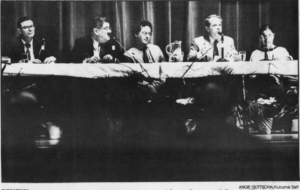
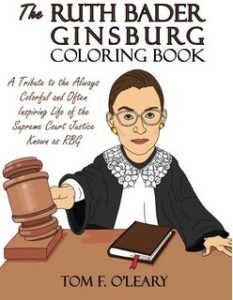
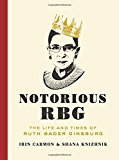
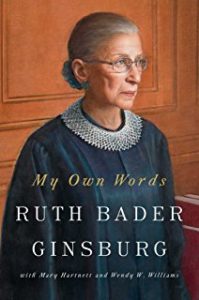
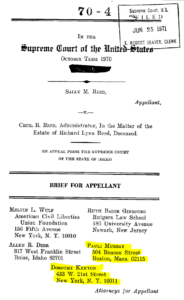
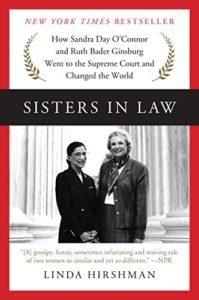
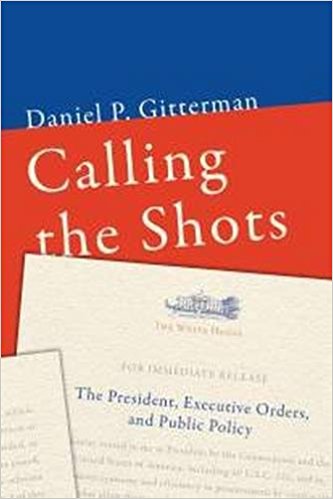

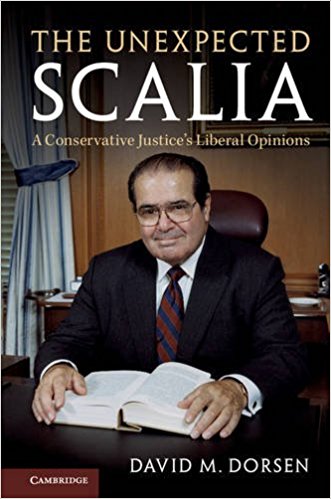 The Unexpected Scalia: A Conservative Justice’s Liberal Opinions
The Unexpected Scalia: A Conservative Justice’s Liberal Opinions
 Readers interested in learning more about NAFTA can review the Brooklyn Law School Library volume
Readers interested in learning more about NAFTA can review the Brooklyn Law School Library volume  The BLS Library has in its collection a related title, an e-book
The BLS Library has in its collection a related title, an e-book  The BLS Library collection includes titles related to social aspects of American life. One such title from the New Book List that stands out is
The BLS Library collection includes titles related to social aspects of American life. One such title from the New Book List that stands out is  The BLS Library has ordered for its collection a related title,
The BLS Library has ordered for its collection a related title,  In the past few years, there has been increased discussion of the growth in America’s prison population to more than 2 million Americans incarcerated, many of them drug offenders, for periods that seem far too long. Since the publication in 2010 of Michelle Alexander’s
In the past few years, there has been increased discussion of the growth in America’s prison population to more than 2 million Americans incarcerated, many of them drug offenders, for periods that seem far too long. Since the publication in 2010 of Michelle Alexander’s  A search of the BLS Library OneSearch platform will lead readers to a recent review of Hinton’s book in the February 2017 issue of the American Journal of Public Health (Vol. 107 Issue 2) under the title Reckoning with the Rise of the Carceral State by David H. Cloud. For more on the topic, the BLS Library has ordered for its collection a new title,
A search of the BLS Library OneSearch platform will lead readers to a recent review of Hinton’s book in the February 2017 issue of the American Journal of Public Health (Vol. 107 Issue 2) under the title Reckoning with the Rise of the Carceral State by David H. Cloud. For more on the topic, the BLS Library has ordered for its collection a new title,